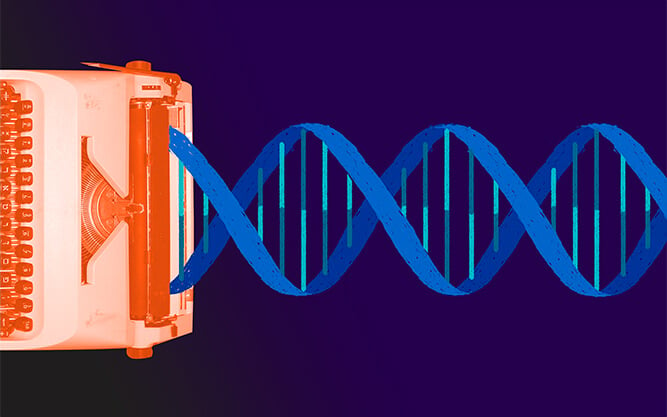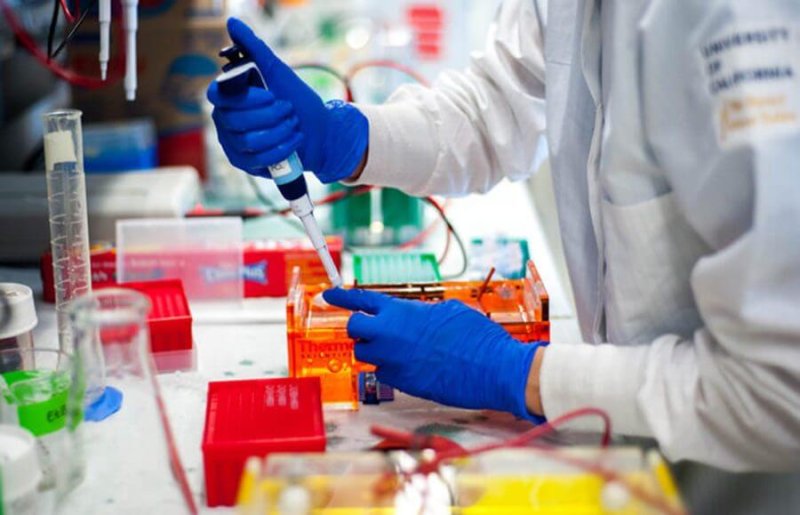Just as we cannot discuss the problem of homelessness without first diagnosing the problem of the housing market generally (including rising prices, rent control, and lower-income housing and subsidies), we cannot have a complete conversation about the ethical use of gene editing without first exploring patent law, which sets the stage for how market forces may shape its future. The manner in which patents are awarded is highly consequential to the way in which gene editing is capitalized on, developed, applied and distributed, all of which strongly influence the aforementioned moral concerns of health, safety, equality and well-being.
The CRISPR patent dispute resurfaced recently after the US Patent Office announced that it has reopened the case involving competing claims by the Broad Institute and the University of California. While Broad won the earlier round of legal battles over key CRISPR patents, this move effectively re-opens a debate that could take another year to resolve.
Patents have come under increased scrutiny due to the problem of “patent trolling” in software industries, the creation of dominating companies, the propensity for patent debates to drag on in litigation and stall development, and the prevention of affordable generic drugs, particularly in poorer countries. In the case of CRISPR applications, will we see a long drawn out patent debate that bars innovation due to costly litigation or preventing competitive innovation for life saving therapies? Or will we see collaborative enterprises that attain patents in order to ensure protection of investments?
Consider that before regulation, before litigation, before most public conversation, there is the patent. Patent procedure and trajectories often frame ensuing legal, political, and moral conversations, primarily because they can dictate the pharmaceutical incentive or disincentives structure, thus influencing pricing, priorities, and politics.

To begin, there are many good reasons to uphold a legal system of patent protection, a subcategory of intellectual property rights. Key thinkers in the Enlightenment period argued that intellectual property is an intrinsic right. In particular, John Locke, an English philosopher and thinker writing in the seventeenth century, argued that individuals who combined their labor with the land have a natural right to the fruits of that labor. The right of ownership extends from this creation, and intellectual property laws ensure this protection. This sense of entitlement to the fruits of one’s labor is thematic in capitalist systems wherein hard work and labor is often lauded as a justification to maintain certain conditions of living and laws.
Following from this is the second reason for patent protection, that it serves a utilitarian purpose and thus has instrumental value. Incentives are integral to progress. By denying anyone who is not the owner of a patent the ability to sell it in a competitive market absent the owner’s express permission, patents ensure that researchers and inventors have the right to exclusively license their patented technology if they publicly disclose their technology. This incentivizes investors and inventors alike to allocate money and time into development and disclosure of new ideas. Absent certain kinds of guarantees that non-innovators will not get to profit from the fruits of others’ labors, scientists and businesses alike would be less likely to disclose their innovations to the public and their competitors. Therefore, in many cases, companies might decide to not engage in research and discovery in the first place.
Recognizing this, the writers of the US Constitution gave Congress the authority to pass laws “To promote the progress of science and useful arts, by securing for limited times to authors and inventors the exclusive right to their respective writings and discoveries.” Patents, the theory goes, therefore benefit all of society, and not just the researcher’s budget, because patents allow for innovative development. Thus, assignment of patent rights can be instrumental in the way that the market dictates the uptake of technology.
This argument is value-based, while also resting on empirical claims, with many disputing whether intellectual property laws in their current condition truly permit scientific progress and artistic creation or expression. Locke even argued that his endorsement of property protection was not unlimited: if we waste the fruits of our labor, we no longer have a right to them. So, do property protections for scientific discoveries aid human progress or not? Part of this hinges on whether patents cultivate a competitive market or whether they allow a monopoly to form which sequesters its technological developments for the privileged few who can pay, as was the case in Myriad Genetics’s patenting of its BRCA tests for breast cancer mutations.
The answer seems to be a qualified yes: ultimately some sort of protection does, but not without strange happenings and setbacks along the way, particularly within the current system. This is because the race to patent can break apart scientific partnerships, and licensing patented technologies to further innovation can present an expensive hurdle for downstream companies to overcome. This hurdle can delay technological innovation and public access to new inventions. Consider the “soaring cost” of inhalers: they are inordinately expensive because manufacturers were able to “rebrand their product, with little to no drug research and development costs, and add a completely new patent protection to their product that could grant them market exclusivity. These patents also created a lack of competition in the inhaler space which allowed for large price increases.”
CRISPR technology could prove a similar “gold mine,” offering researchers “the promise of tremendous wealth, fame, and scientific prestige.” Several key companies and institutes have been vying for patents since its early discovery in 2012, instead of opting to first publish and continue to allow their research to progress freely.
Prior to a recent patent awarded to Jennifer Doudna and Charpentier, in September 2018, the US Court of Appeals for the Federal Circuit affirmed the US patent office’s decision that the Broad Institute’s Feng Zhang’s patents over the claims from UC Berkeley’s applications with Doudna and Charpentier from the Max Planck Institute. The firestorm of competition and “potential worth of billions of dollars, CRISPR has the capability to break scientific partnerships as easily as it does DNA” resulting in loss of collaboration often seen as the heart of progress. Robert Cook-Deegan, research professor in the Sanford School of Public Policy, argues that this reflects “the hard work… in determining when and how patents provide socially optimal incentives and when private incentives fall out of alignment with ‘progress in science and the useful arts.’”
One exception to this is that while universities are no longer wholly exempt from paying to use patented technologies, Cristina Weschler, a practicing lawyer, argues that “it is often in companies’ interests to come to a working arrangement where, for example, patented materials either are licensed at extremely low rates or a blind eye is turned towards infringing behavior.” Nevertheless, companies here wield immense power in that relationship.
Remember that patent law often precedes regulation: Often patents are awarded and then governments think about how to control the use of this new technology on the market. But for Shobita Parthasarathy, professor and director of the Science, Technology, and Public Policy Program at the School of Public Policy at the University of Michigan in Ann Arbor, “patents can shape innovation trajectories” because the “decisions governments make about whether to grant patents implicitly demonstrate their moral approval of an invention and indicate what types of technology are likely to generate exclusive markets.” She goes on to write that the holders of patents have the sole power to license their patented technologies to others, thereby having discretion over who gets to develop certain therapies and for what reasons. This confers companies holding valuable patented technologies with immense power. As a result, Parthasarathy calls for “government-driven regulation using the patent system.” She shows that a “existing approaches, and the entities that are conventionally tasked with overseeing areas of scientific research, seem ill-equipped to address complex societal and value-based concerns in an increasingly privatized world. Patents, which affect the thousands of investigators now using CRISPR–Cas9 in both the private and public sector, should be part of the mix.”
Indeed, patents, like many other legal constructs, do not exist in isolation from broader moral and political conversations. For example, others worry about the role of the courts in resolving patent disputes, arguing there is a “classic disconnect between the legal standards of patent law and the realities of scientific research.” However, for such researchers as Jacob Sherkow, professor at the Innovation Center for Law and Technology at New York Law School, even when the “CRISPR patent decision may not have gotten the science right… that doesn’t make it wrong as a legal matter.”
Returning now to the fact that patents are rewarded prior to regulation. The ever-present reality also is that empowering corporations absent regulation is a dangerous mix: it creates the conditions for domination and abuse, for disregarding the appeals and need of the public that patent protection professes to benefit. Because patent debates often happen behind the scenes and are shrouded in legalese and scientific jargon, they are thought of as exclusive and particularist constructs of law and science. As Sherkow argues: “Although barely 5 years old, CRISPR as a genome editing system has transformed both laboratory practice and clinical aspiration.
Whether it will fulfill these lofty promises lies in the hands of its practitioners and their interaction with the US and other patent regimes—choices, ultimately, between conflict and cooperation. Patents can indeed serve as useful tools to develop a technology commercially. But like all tools, they wield no power apart from their users. The future of CRISPR patent landscape— like the future of CRISPR itself—depends on the stewardship of its researchers and their institutions.”
This debate somewhat mirrors the regulatory debate more generally: We think of the free market and competition as integral to progress while also recognizing that there are significant public safety concerns that require governmental protection to prevent harm to consumers. Government should create the conditions for human flourishing, and this expands beyond safety, including also the general distribution of resources as significant to achieving just equality, welfare, and wellbeing. The question then is not whether patents themselves are good or bad, but how governments decide to assign, distribute, and allot rights to patent owners. This conversation of patent law systems is thus no less imperative, therefore, for public awareness and participation as it is in the broader ethical use of technology discourse.
Naomi Scheinerman is a PhD candidate in Yale University’s Department of Political Science. Her work lies at the intersection of democratic theory, ethics, philosophy of science and epistemology, with special interest in re-imagining the authority of the science expert, the lay person and their governing institutions in regulating new and emerging technologies. Follow her on Twitter @NScheinerman
Jordana Goodman is an intellectual property attorney at Danielson Legal, LLC in Cambridge Massachusetts. She graduated cum laude from Boston University School of Law with a concentration in intellectual property law and is currently pursuing a master’s in chemical engineering at Worcester Polytechnic Institute. Her work primarily focuses on patent prosecution and transactional law
































